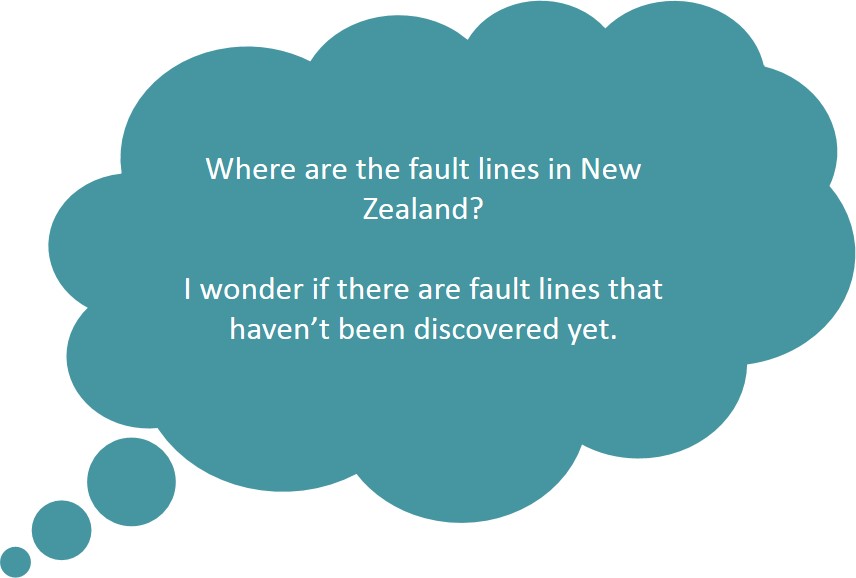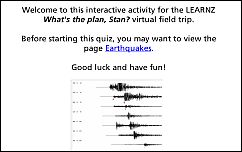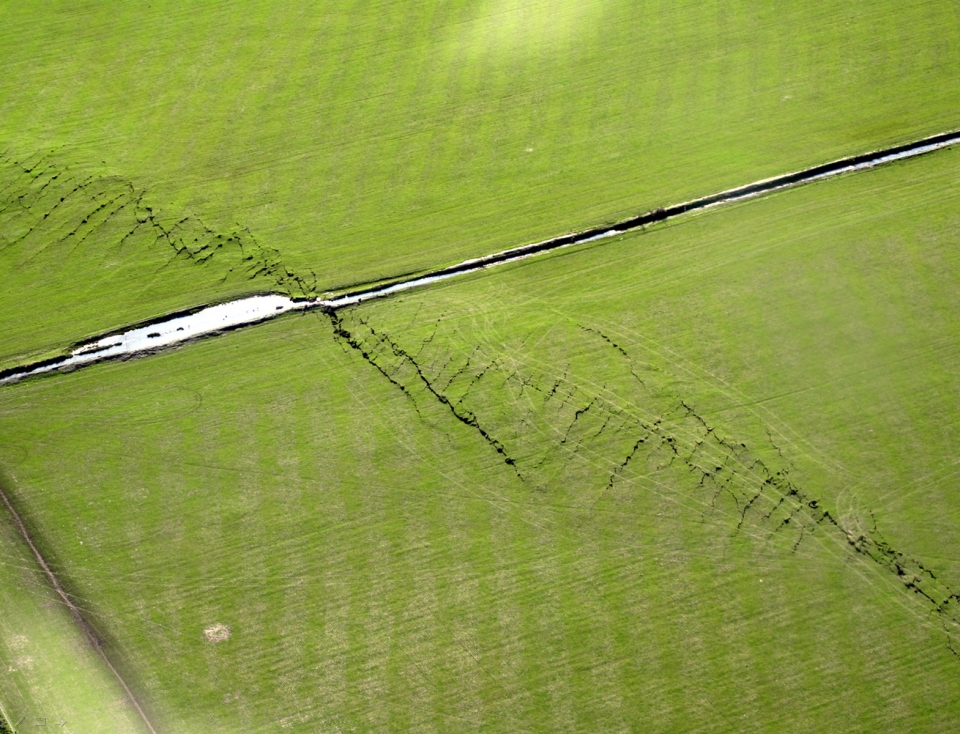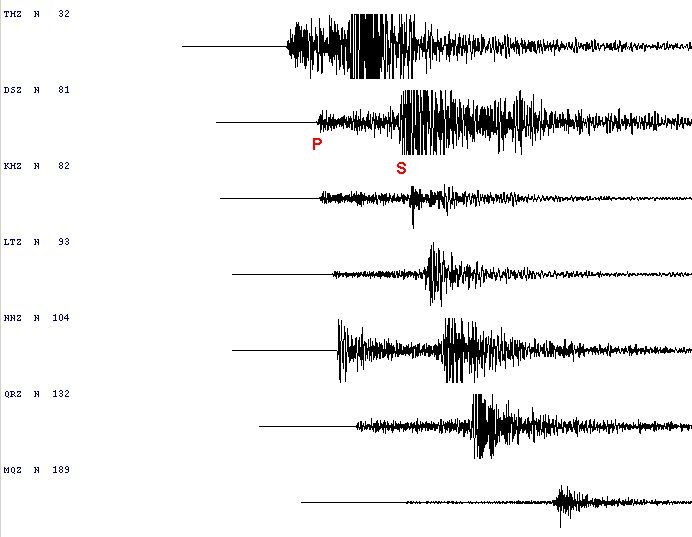Faults
A fault is a break in the rocks that make up the Earth's crust, along which rocks on either side have moved past each other. Sometimes the blocks of rock on either side of a fault shift to a new position in just a few seconds. This sudden release of energy sends out seismic waves, or shock waves. These waves are felt as an earthquake.

Earthquakes in Māori tradition
Long before Europeans arrived, Māori had felt rū whenua which means ‘the shaking of the land’. In Māori tradition, earthquakes are caused by the god Rūaumoko, the son of Ranginui (the Sky) and his wife Papatūānuku (the Earth).
Rangi had been separated from Papa, and his tears had flooded the land. Their sons tried to turn their mother face down, so that she and Rangi would not see one another’s sorrow. When Papatūānuku was turned over, Rūaumoko was still at her side and was carried to the world below. To keep him warm he was given fire. He is the god of earthquakes and volcanoes, and the rumblings of the land are made by him as he walks about.
Anywhere in New Zealand
A large earthquake could happen anywhere in New Zealand. But some areas have more than others. Wellington is one of the most active earthquake regions and Auckland one of the least active. Large earthquakes can still happen in regions with lower activity. This is best seen by the recent events in Christchurch.
What can we expect in the future?
Based on history, New Zealand should have:
- 50 magnitude 5 earthquakes each year
- two magnitude 6 earthquakes each year
- four magnitude 7 earthquakes per decade
- a magnitude 8+ earthquake every century.
But earthquakes are not evenly spread over time and they often occur in clusters. A damaging earthquake could happen at any time.










